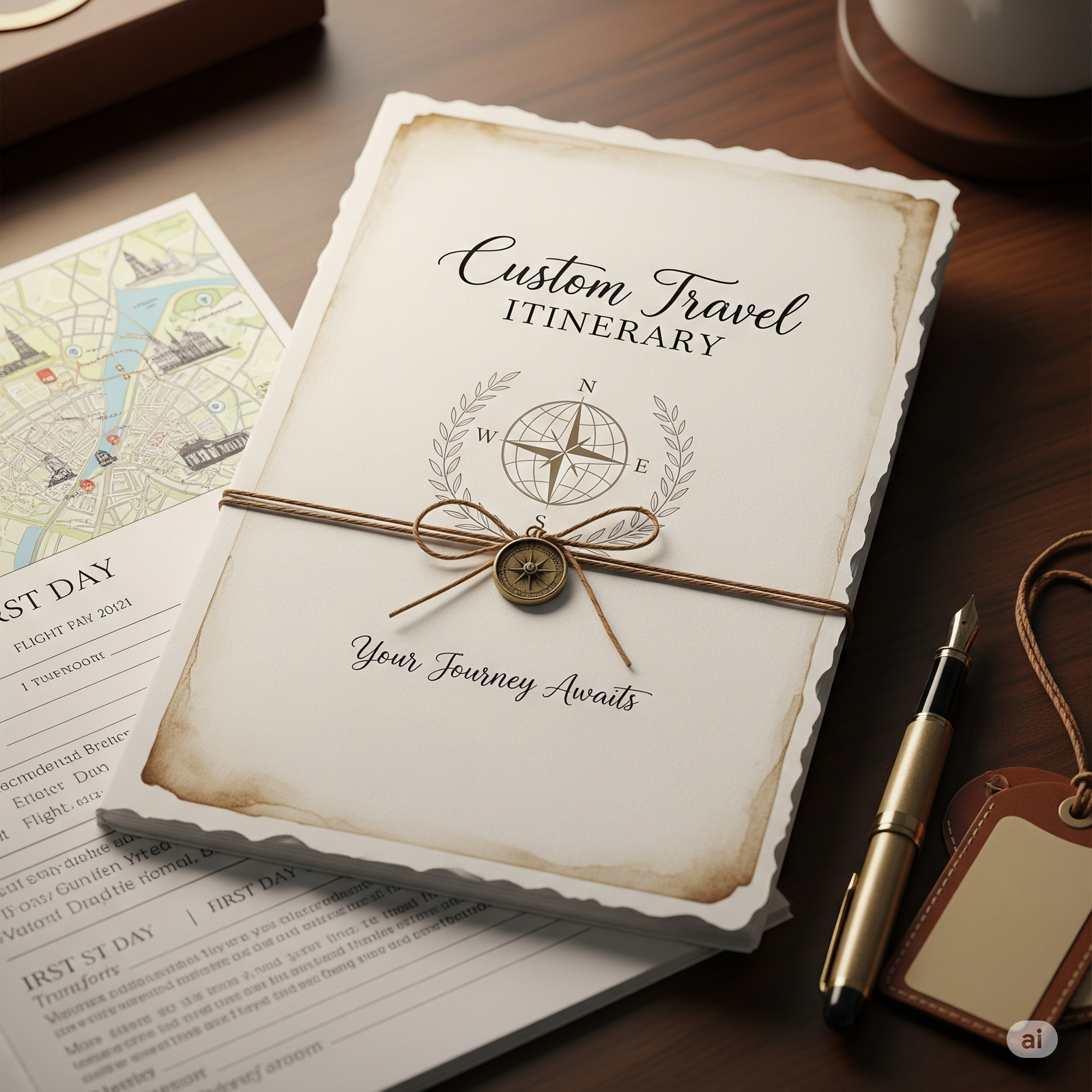Dreaming of your next adventure but tired of pre-packaged tours that don’t quite fit your interests or pace? Creating a custom travel itinerary puts you in the driver’s seat, allowing you to design a trip that’s perfectly tailored to your desires. It might seem daunting at first, but with a systematic approach, you can craft an unforgettable journey. Here’s a step-by-step guide to help you get started.
1. Define Your Travel Style and Preferences:
Before diving into destinations, take some time to reflect on what you truly want from your trip. Ask yourself:
- What are your interests? History, nature, food, adventure, relaxation, culture, nightlife?
- What’s your travel style? Budget-friendly backpacking, comfortable mid-range travel, or luxurious indulgence?
- Who are you traveling with? Solo, partner, family with young children, or a group of friends? This will influence the pace and types of activities you choose.
- What’s your preferred pace? Do you like to see as much as possible, moving from place to place quickly, or do you prefer to immerse yourself in a few locations?
- What’s your budget? Having a clear budget will guide your choices for destinations, accommodation, and activities.
- How much time do you have? The duration of your trip will significantly impact how many destinations you can realistically include.
2. Choose Your Destination(s):
Once you have a good understanding of your travel style and preferences, start brainstorming destinations that align with your interests. Consider:
- Research: Read travel blogs, guidebooks, and articles, and look at photos and videos to get inspired.
- Location: Think about the geographical proximity of potential destinations if you plan to visit multiple places.
- Seasonality: Consider the best time to visit your chosen destinations for favorable weather and fewer crowds.
- Accessibility: Research visa requirements, transportation options, and any potential safety concerns.
3. Outline a Rough Itinerary:
Based on your chosen destinations and the time you have, create a rough outline of your trip. Allocate a general timeframe for each location, taking into account travel time between them. Don’t worry about the specifics yet; this is just to get a sense of the overall flow of your journey.
4. Research and Select Activities and Attractions:
Now comes the exciting part – delving into the specifics of what you want to see and do in each location.
- Identify Key Attractions: Research must-see landmarks, museums, natural wonders, and cultural experiences.
- Explore Activities: Look into activities that match your interests, such as hiking, cooking classes, guided tours, water sports, or attending local events.
- Read Reviews: Check online reviews from other travelers to get an idea of the quality and experience of different attractions and activities.
- Note Opening Hours and Costs: Keep track of opening times, admission fees, and any booking requirements.
5. Plan Your Transportation:
Efficient transportation is crucial for a smooth trip. Research and plan how you will get between destinations and within each location.
- Intercity Travel: Consider flights, trains, buses, or rental cars, comparing costs and travel times. Book in advance, especially during peak season.
- Local Transportation: Investigate options like public transport, taxis, ride-sharing services, or bike rentals within each city or region.
6. Choose Your Accommodation:
Your choice of accommodation can significantly impact your travel experience and budget.
- Consider Your Budget and Style: Options range from hostels and guesthouses to budget hotels, boutique stays, and luxury resorts.
- Location Matters: Choose accommodation that is conveniently located for the activities you have planned.
- Read Reviews: Pay attention to reviews regarding cleanliness, comfort, service, and safety.
- Book in Advance: Especially if you are traveling during peak season or to popular destinations.
7. Factor in Meals and Food Experiences:
Food is an integral part of any travel experience. Research local cuisine and plan some of your meals.
- Identify Must-Try Dishes: Look for local specialties and popular restaurants.
- Consider Dietary Restrictions: If you have any dietary restrictions, research restaurants that cater to your needs.
- Be Open to New Experiences: Don’t be afraid to try street food and local eateries.
8. Build in Flexibility:
While a detailed itinerary is helpful, it’s also important to build in some flexibility. Leave room for spontaneous discoveries, unexpected delays, or simply spending more time in a place you love. Don’t overschedule your days.
9. Organize and Document Your Itinerary:
Once you have all the details, organize your itinerary in a clear and accessible format. This could be a spreadsheet, a travel app, or a simple document. Include important information like:
- Dates and times
- Accommodation details (addresses, booking confirmations)
- Transportation details (booking confirmations, schedules)
- Activity and tour details (booking confirmations, addresses)
- Emergency contact information
10. Review and Refine:
Before your trip, review your itinerary to ensure it flows well and that you haven’t overpacked your schedule. Get feedback from your travel companions if applicable.
Creating a custom travel itinerary is an empowering process that allows you to craft the perfect adventure for yourself. By following these steps, you can transform your travel dreams into a well-planned and unforgettable reality.









Leave a Reply